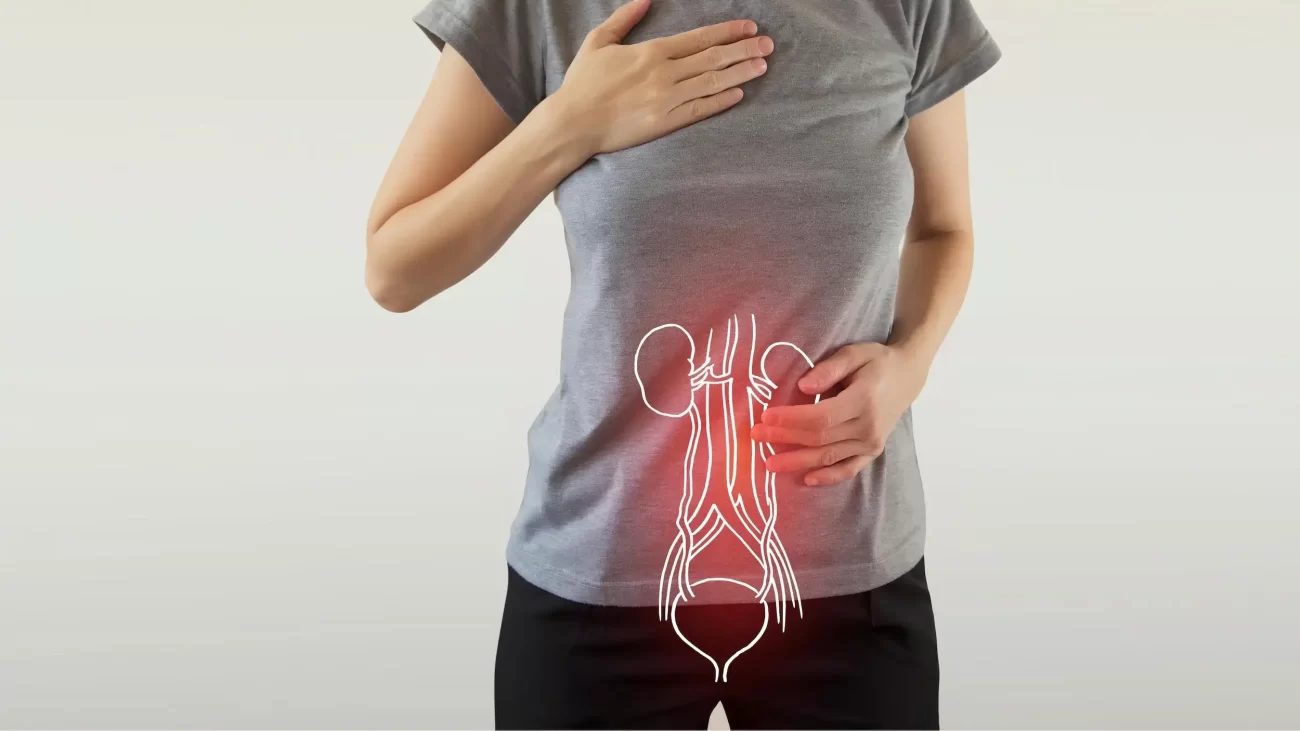Urinary Tract Infections (UTIs): Causes, Symptoms, and Treatment Methods

Urinary tract infections (UTIs) are bacterial infections affecting any part of the urinary tract, particularly the kidneys, ureters, bladder, and urethra. They most commonly occur in the bladder (cystitis) and urethra (urethritis). These infections can range from mild to severe, potentially leading to more serious complications if left untreated.
What Are Urinary Tract Infections?
Urinary tract infections arise from bacterial infections in the urinary tract. The urinary tract is a system that begins at the kidneys and extends through the bladder and urethra to the outside. Bacteria typically enter the urinary tract through the urethra and reach the bladder. The urinary tract is normally a sterile environment, so when bacteria reach this area, the body initiates an immune response to fight the infection.
UTIs are more common in women because their urethras are shorter than men’s, making it easier for bacteria to reach the bladder. However, men can also develop UTIs, especially in older males, often associated with prostate enlargement or other urinary tract issues.
Causes
The most common cause of urinary tract infections is the entry of bacteria from the urethra into the bladder. The most frequently encountered bacteria is Escherichia coli (E. coli), which resides in the intestines and enters the urinary tract after contact with feces. Other microorganisms and certain risk factors may also contribute to the development of UTIs.
- Bacterial Infections
- E. coli: The most common cause of UTIs, typically entering the urinary tract through fecal matter.
- Sexual Activities: During sexual intercourse, bacteria can easily enter the urinary tract through the urethra.
- Hygiene Deficiencies: Inadequate hygiene after using the toilet, especially wiping from back to front, can lead to the transfer of bacteria to the urethra.
- Anatomical Structure of Women
- Women have shorter urethras, making it easier for bacteria to reach the bladder. Additionally, decreased estrogen levels after menopause can weaken the natural protective barriers in the vaginal and urinary systems.
- Inadequate Fluid Intake
- Not drinking enough water can hinder the dilution of urine and make it more difficult to flush bacteria out of the urinary tract.
- Catheter Use
- Long-term use of urinary catheters can provide a pathway for bacteria to enter the urinary tract and increase the risk of UTIs.
- Prostate Enlargement or Urethral Stricture
- In men, age-related conditions such as prostate enlargement or urethral stricture can prevent complete bladder emptying, leading to bacterial proliferation in the urinary tract.
- Weakened Immune System
- Individuals with weakened immune systems are more susceptible to UTIs. This is common among diabetics and those taking immunosuppressive medications.
Symptoms
The symptoms of urinary tract infections can vary depending on the location and severity of the infection. However, the most common symptoms include:
- Painful and Frequent Urination (Dysuria)
- One of the most common symptoms of UTIs is a burning sensation or pain when urinating. There may also be a frequent urge to urinate, but the amount of urine is usually small.
- Changes in Urine Color and Odor
- Urine may appear cloudy or have a foul smell. In some cases, blood in the urine (hematuria) may be observed.
- Lower Abdominal Pain or Pressure
- Infections affecting the bladder can cause pressure or pain in the lower abdomen.
- High Fever, Chills, and Fatigue
- When the infection spreads to the kidneys, symptoms such as high fever, chills, nausea, and general fatigue may develop. In this case, a kidney infection (pyelonephritis) may have occurred, requiring urgent treatment.
- Feeling of Incomplete Bladder Emptying
- There may be a sensation that the bladder is not completely empty after urination.
- Back Pain
- Infections that spread to the kidneys can cause pain on the sides of the back or in the lower back region.
Treatment Options
The treatment of urinary tract infections typically involves the use of antibiotics to eliminate the bacterial infection. However, treatment options may vary based on the type of infection, its severity, and the individual’s health condition.
- Antibiotic Treatment
- The most commonly used method to treat UTIs is antibiotics. Doctors typically conduct a urinalysis to identify the bacteria causing the infection and prescribe the appropriate antibiotic. Antibiotic treatment usually lasts for several days, but this duration may be extended for more severe infections.
- Commonly Used Antibiotics: Nitrofurantoin, trimethoprim-sulfamethoxazole, fosfomycin, and ciprofloxacin are frequently used.
- Long-Term Infections: Particularly in recurrent UTI cases or kidney infections, longer-term antibiotic therapy may be necessary.
- Increased Fluid Intake
- Drinking plenty of water can help flush bacteria out of the urinary tract. Staying well-hydrated during a UTI can accelerate the recovery process.
- Pain Relievers
- Doctors may recommend pain relievers or antispasmodic medications to alleviate the burning sensation during urination. Additionally, using a hot water bottle can relieve abdominal or back pain.
- Probiotic Use
- Probiotics can help reduce the risk of UTIs by supporting vaginal and intestinal health. Foods rich in probiotics, such as yogurt and other fermented foods, can boost the immune system.
- Post-Sexual Activity Hygiene
- Urinating after sexual intercourse and keeping the genital area clean can reduce the risk of infection. Additionally, using non-antibacterial soaps helps maintain the natural balance of the genital area.
- Surgical Intervention
- If there is a structural problem in the urinary tract or persistent recurring infections, surgical intervention may be necessary. For example, kidney stones or prostate enlargement can obstruct urine flow, leading to infections. In such cases, surgical solutions may be considered.
Conclusion
Urinary tract infections are common, especially in women, but can also lead to serious health issues in men. With early diagnosis and appropriate treatment, infections typically resolve quickly. Drinking plenty of water, adhering to hygiene practices, and following the doctor’s recommended treatment plan can alleviate the effects of UTIs and reduce the risk of recurrence.
